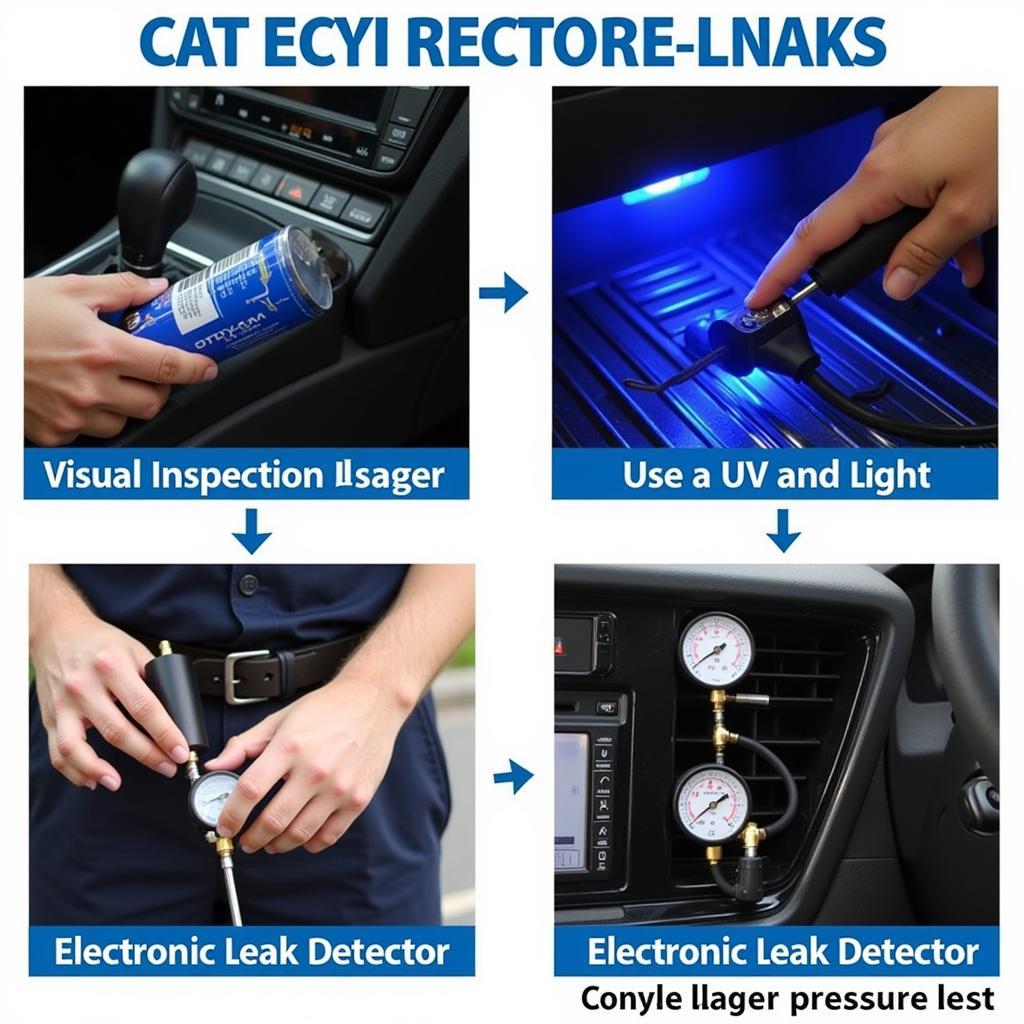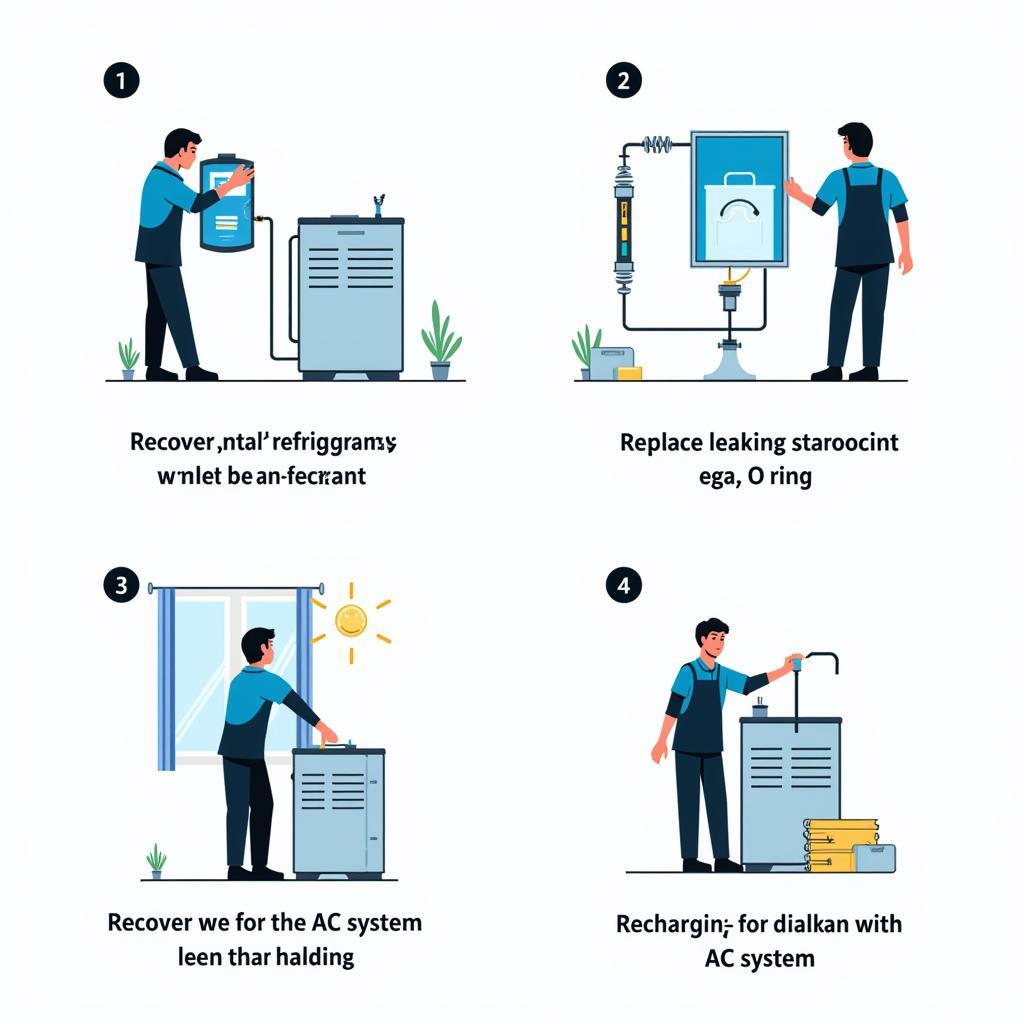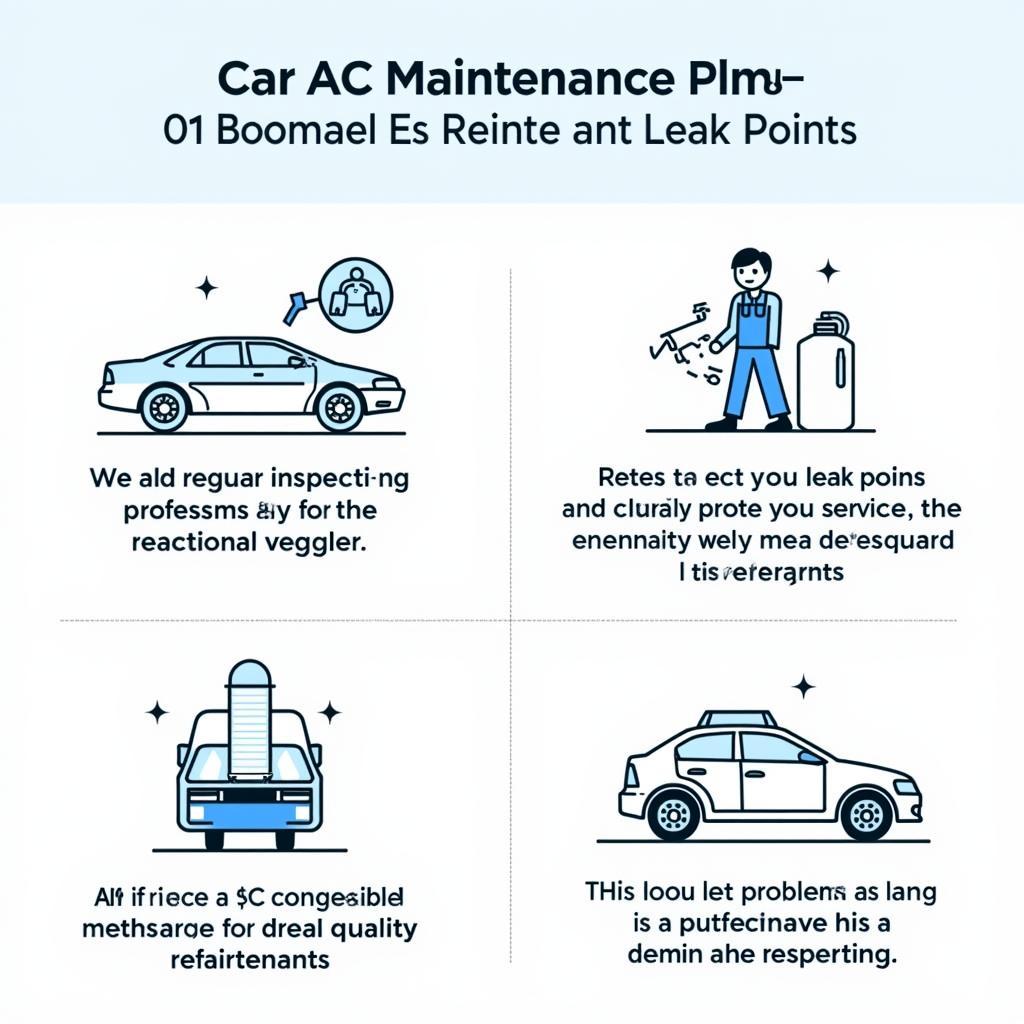A leaky car AC system can be a real pain, especially during hot summer months. Understanding how to diagnose and fix a car air conditioning leaking issue can save you money and keep you cool. This guide covers everything from pinpointing the leak to implementing the right solution.
Common Causes of a Car Air Conditioning Leaking
There are several reasons why your car air conditioning might be leaking. Identifying the source is the first step to fixing the problem. Some of the most common culprits include:
- Leaking O-rings and Seals: These rubber components can dry out and crack over time, leading to refrigerant leaks.
- Damaged Hoses and Connections: Vibrations and wear and tear can damage the hoses and connections within the AC system.
- Corroded Condenser or Evaporator: Exposure to the elements can cause these components to corrode, resulting in leaks.
- Faulty Compressor: A failing compressor can leak refrigerant, often accompanied by noisy operation.
Identifying the Leak in Your Car AC
Locating the exact source of the car air conditioning leaking can be tricky. Here are a few methods to help you pinpoint the problem:
- Visual Inspection: Carefully examine all hoses, connections, and components for signs of damage, corrosion, or oil residue. This is often the easiest way to spot obvious leaks.
- UV Dye Test: A UV dye can be injected into the AC system. Using a UV light, you can then trace the dye to locate the leak. This is a highly effective method for finding small or hidden leaks.
- Electronic Leak Detector: These specialized tools can detect even the smallest refrigerant leaks. They are more expensive but provide very accurate results.
- Pressure Test: A pressure test can help identify leaks by pressurizing the system and monitoring for pressure drops.
 Car AC Leak Detection Methods
Car AC Leak Detection Methods
Fixing the Car Air Conditioning Leaking: A Step-by-Step Guide
Once you’ve identified the source of the leak, you can begin the repair process. Here’s a general guide, but remember that some repairs may require specialized tools and knowledge.
- Gather Your Supplies: You’ll need the appropriate replacement parts (O-rings, seals, hoses, etc.), refrigerant, and the necessary tools for the job.
- Recover the Refrigerant: Before working on the AC system, it’s essential to recover the remaining refrigerant using a recovery machine. This is crucial for environmental protection.
- Repair or Replace the Leaking Component: Replace damaged O-rings, seals, hoses, or other components as needed. If the condenser or evaporator is corroded, they may need to be replaced.
- Vacuum the System: After the repair, vacuum the system to remove air and moisture. This is essential for proper AC operation.
- Recharge the System: Recharge the system with the correct amount of refrigerant specified for your vehicle.
- Test the System: Run the AC system to ensure the leak is fixed and the system is functioning correctly.
 Car AC Repair Process
Car AC Repair Process
Preventing Future Leaks
Regular maintenance can help prevent future car air conditioning leaking problems.
- Regular Inspections: Inspect the AC system components regularly for signs of wear and tear.
- AC System Service: Have your AC system serviced periodically by a qualified technician. This typically includes checking for leaks, recharging the refrigerant, and inspecting components.
Expert Insights
John Smith, a certified automotive HVAC specialist, emphasizes, “Regular maintenance is key to preventing costly AC repairs. A simple inspection can often catch small leaks before they become major problems.”
Jane Doe, another experienced automotive technician, adds, “Using the right tools, like a UV dye kit or electronic leak detector, can save you a lot of time and frustration when diagnosing AC leaks.”
 Car AC Maintenance Tips
Car AC Maintenance Tips
Conclusion
Addressing a car air conditioning leaking issue can seem daunting, but with the right approach, it’s manageable. By understanding the causes, using proper diagnostic techniques, and following the correct repair procedures, you can keep your car’s AC system running smoothly. For personalized support, connect with AutoTipPro at +1 (641) 206-8880 or visit our office at 500 N St Mary’s St, San Antonio, TX 78205, United States.





Leave a Reply